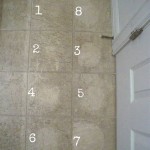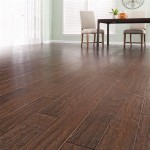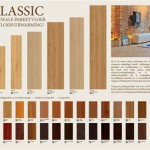European White Oak Flooring Reviews: A Comprehensive Guide
European White Oak flooring has become a highly sought-after choice for homeowners and designers alike. Its inherent beauty, durability, and versatility contribute to its enduring popularity. Understanding the nuances of this flooring option is crucial before making a purchase. This article provides a detailed review of European White Oak flooring, covering its characteristics, advantages, disadvantages, maintenance, and cost considerations.
The term "European White Oak" typically refers to oak harvested from the *Quercus robur* species, primarily found in Europe. While technically belonging to the same family as American White Oak (*Quercus alba*), European White Oak exhibits subtle differences in grain pattern and color, often presenting with a warmer, more consistent tone. This distinction contributes to its distinctive aesthetic appeal.
The aesthetic of European White Oak is often characterized by longer and wider planks compared to traditional hardwood flooring. This dimensional difference enhances the visual impact of the wood, creating a more expansive and luxurious feel in a space. The wider planks also reduce the number of seams, contributing to a cleaner, more seamless appearance. Often, European White Oak will be crafted with a thicker wear layer, lending itself to being refinished numerous times throughout its lifespan.
Key Features and Characteristics
European White Oak's unique attributes are central to its desirability. These features influence both the aesthetic and practical aspects of the flooring.
Grain Pattern: Unlike the more pronounced grain patterns often seen in American White Oak, European White Oak typically displays a tighter, more uniform grain. This subtle distinction lends a sense of sophistication and understated elegance to the flooring. The finer grain also tends to obscure minor imperfections, contributing to a smoother overall visual.
Color Variation: European White Oak typically presents in a range of warm, light-to-medium brown tones. Because of the natural variability of wood, some planks may exhibit slight variations in color, adding character and depth to the floor. These natural variations are considered a desirable characteristic by many, contributing to the overall organic aesthetic.
Hardness and Durability: Oak, in general, is known for its hardness, and European White Oak is no exception. It scores well on the Janka hardness scale, a measure of wood's resistance to denting and wear. This hardness makes it suitable for high-traffic areas in residential and commercial settings. However, it's important to note that no wood floor is entirely impervious to scratches and dents, and proper maintenance is still required to preserve its appearance. The presence of tannins in the wood also contributes to its natural resistance to decay and insect infestation.
Dimensional Stability: European White Oak possesses good dimensional stability, meaning it is less prone to significant expansion and contraction due to changes in humidity and temperature compared to some other wood species. This stability is particularly important in regions with fluctuating climates. However, it's crucial to acclimatize the flooring properly before installation to minimize potential issues.
Finishing Options: European White Oak readily accepts a wide range of finishes, allowing for versatility in design. It can be stained to achieve various colors, from light and airy to dark and dramatic. Popular finishing options include oil-based finishes, which penetrate the wood and provide a natural look and feel, and polyurethane finishes, which offer a more durable and protective surface. The choice of finish also impacts the maintenance requirements of the floor.
Advantages of European White Oak Flooring
The benefits of choosing European White Oak flooring extend beyond its aesthetic appeal.
Aesthetic Versatility: Its neutral color palette and subtle grain pattern allow European White Oak to complement a wide range of interior design styles, from traditional to contemporary. It can be paired with various furniture styles, wall colors, and decorative accents, making it a highly adaptable flooring option.
Increased Home Value: Hardwood flooring, particularly European White Oak, is often perceived as a premium feature in a home. Investing in European White Oak flooring can potentially increase the resale value of a property. Its durability and long-lasting beauty make it a worthwhile investment for homeowners.
Health and Environmental Benefits: Solid hardwood flooring, including European White Oak, is generally considered a healthier flooring option compared to synthetic materials. It doesn't harbor dust mites or allergens to the same extent as carpets. Furthermore, if sourced from sustainably managed forests, it's an environmentally responsible choice. Look for certifications such as FSC (Forest Stewardship Council) to ensure responsible sourcing.
Longevity and Refinishability: With proper care and maintenance, European White Oak flooring can last for generations. Its solid construction allows for multiple refinishings, extending its lifespan and allowing homeowners to update the look of their floors without replacing them entirely. The ability to refinish is a significant advantage over other flooring options that need to be replaced when they become worn.
Wide Plank Availability: As mentioned, European White Oak is commonly available in wide planks, which are highly desirable for modern interior designs. These wider planks create a more open and spacious feel in a room, making them a popular choice for larger spaces.
Potential Drawbacks to Consider
While offering numerous advantages, European White Oak flooring also presents some considerations.
Cost: European White Oak flooring typically comes at a higher price point compared to other hardwood flooring options. The cost reflects the quality of the wood, the sourcing practices, and the manufacturing processes involved. The installation costs can also be higher, especially for wide planks, which require more skill and precision.
Susceptibility to Scratches and Dents: Despite its hardness, European White Oak is still susceptible to scratches and dents, especially in high-traffic areas or households with pets. Protecting the floor with rugs, furniture pads, and regular cleaning can help minimize these issues.
Sensitivity to Moisture: While more dimensionally stable than some other wood species, European White Oak can still be affected by excessive moisture. It's crucial to avoid installing it in areas prone to water damage, such as bathrooms or laundry rooms. Proper humidity control is also essential to prevent warping or cupping.
Maintenance Requirements: European White Oak flooring requires regular maintenance to preserve its appearance and longevity. This includes regular sweeping or vacuuming to remove dirt and debris, as well as occasional cleaning with a wood-specific cleaner. The type of finish applied to the floor will also impact the maintenance requirements.
Acclimation is Crucial: Before installation, European White Oak flooring necessitates a period of acclimation within the intended installation environment. This process allows the wood to adjust to the room's ambient temperature and humidity levels, minimizing the risk of expansion or contraction after installation. Failure to properly acclimate the flooring can lead to buckling, gapping, or other issues.
Maintenance and Care
Proper maintenance is critical for preserving the beauty and longevity of European White Oak flooring.
Regular Cleaning: Sweep or vacuum the floor regularly to remove dirt, dust, and debris. Use a soft-bristled broom or a vacuum with a felt brush attachment to avoid scratching the surface. Avoid using vacuums with beater bars, as they can damage the finish.
Cleaning Products: Use a wood-specific floor cleaner recommended by the flooring manufacturer. Avoid using harsh chemicals, abrasive cleaners, or excessive amounts of water. Damp-mop the floor using a microfiber mop and a wood floor cleaner solution, ensuring that the mop is wrung out thoroughly to prevent water damage.
Preventative Measures: Place rugs or mats at entrances to trap dirt and debris. Use furniture pads under the legs of chairs and tables to prevent scratches. Trim pet's nails regularly to minimize scratching. Avoid wearing shoes with high heels or cleats on the floor.
Humidity Control: Maintain a consistent humidity level in the home to prevent excessive expansion or contraction of the wood. Use a humidifier or dehumidifier as needed to maintain the recommended humidity range for hardwood flooring. Check with the flooring manufacturer for specific humidity recommendations.
Refinishing: Over time, European White Oak flooring may require refinishing to restore its original beauty. Refinishing involves sanding down the existing finish and applying a new coat of finish. This process can be repeated multiple times, extending the lifespan of the flooring.
Cost Considerations
The cost of European White Oak flooring is influenced by several factors.
Wood Grade and Quality: The grade of the wood, which refers to the number and size of knots and imperfections, affects the price. Higher grades with fewer imperfections command a premium. The milling precision and overall quality control during manufacturing also contribute to the cost.
Plank Width and Length: Wider and longer planks typically cost more due to the increased demand for such dimensions and the greater waste during manufacturing.
Finish Type: Pre-finished flooring tends to be more expensive than unfinished flooring, but it saves time and labor during installation. The type of finish also influences the price, with some finishes offering greater durability and resistance to wear.
Installation Costs: Installation costs vary depending on the complexity of the project, the condition of the subfloor, and the experience of the installer. Wide planks may require more skilled installers, leading to higher installation fees.
Geographic Location: The cost of European White Oak flooring can vary depending on the geographic location due to differences in transportation costs and local market demand.
Before purchasing European White Oak flooring, it is advisable to obtain quotes from multiple suppliers and installers to compare prices and ensure that you are getting a fair deal. Consider visiting showrooms to see and feel the different options available before making a decision.

Our Favorite European Oak Hardwoods For 2024 Mouery S Flooring

Reviews For Aspen Flooring Ire Mist White Oak 1 2 In T X 7 5 W Water Resistant Wire Brushed Engineered Hardwood 31 09 Sqft Case Pg The Home Depot

Our Favorite European Oak Hardwoods For 2024 Mouery S Flooring

Timeless Designs West Coast European White Oak Turtle Beach 7 1 2 Westtube River City Flooring

Reviews For Aspen Flooring Timber Wolf European White Oak 1 2 In T X 7 5 W Water Resistant Engineered Hardwood 1399 05 Sq Ft Pallet Pg 3 The Home Depot

Timeless Designs West Coast European White Oak Ocean Way 7 1 2 Westocwa River City Flooring

Reviews For Aspen Flooring Timber Wolf European White Oak 1 2 In T X 7 5 W Water Resistant Engineered Hardwood 1399 05 Sq Ft Pallet Pg 3 The Home Depot

Galleria Professional Engineered European Rustic Oak Flooring 20mm X 190mm Winter Dawn Lacquered

Timeless Designs Milano European White Oak Tawny 7 1 2 Milatawn River City Flooring

How White Oak Flooring Is Changing Interior Design Carlisle Wide Plank Floors
Related Posts








